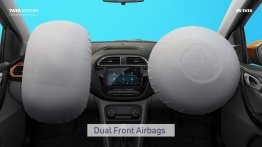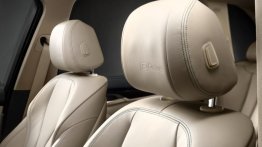1. Antilock Braking Systems (ABS) are safety devices which prevent wheel lockup during braking and ensure that the wheel is tractable even while braking and hence ensuring the steeribility and stability of the vehicle.
2. The Antilock Braking System typically applies brakes and releases it at the rate of 25 times per second. This could cause a pulsating brake pedal which is perfectly normal. ABS improves vehicle control and decreases braking distances in wet and slippery conditions.
3. ABS consists of 4 wheel speed sensors, a Hydraulic modulator and an ECU. The system works continuously monitoring the wheel speeds at all times and in case it detects a slip (if one wheel rotates faster than the other three) the modulator applies brakes to that wheel till it stops slipping. Electronic Brakeforce Distribution (EBD) and Electronic Stability Control (ESC) programs are extensions of the ABS, with the latter requiring 2 additional sensors, a steering wheel angle sensor and a yaw-rate sensor.
4. Just because a car is equipped with ABS, one cannot drive aggressively testing the limits of the car. The ABS system actually does not increase the handling characteristics of the car, it just makes the car easier to control and safer to maneuver under heavy braking.
5. The first bike to come with an Anti-lock braking system was a BMW K100 in 1988. The bike came with a electronically controlled hydraulic ABS system.
The importance of ABS has made many countries in America and Europe to make ABS a mandatory feature on all cars. Developing countries like India could also bring these regulations in the distant future.















